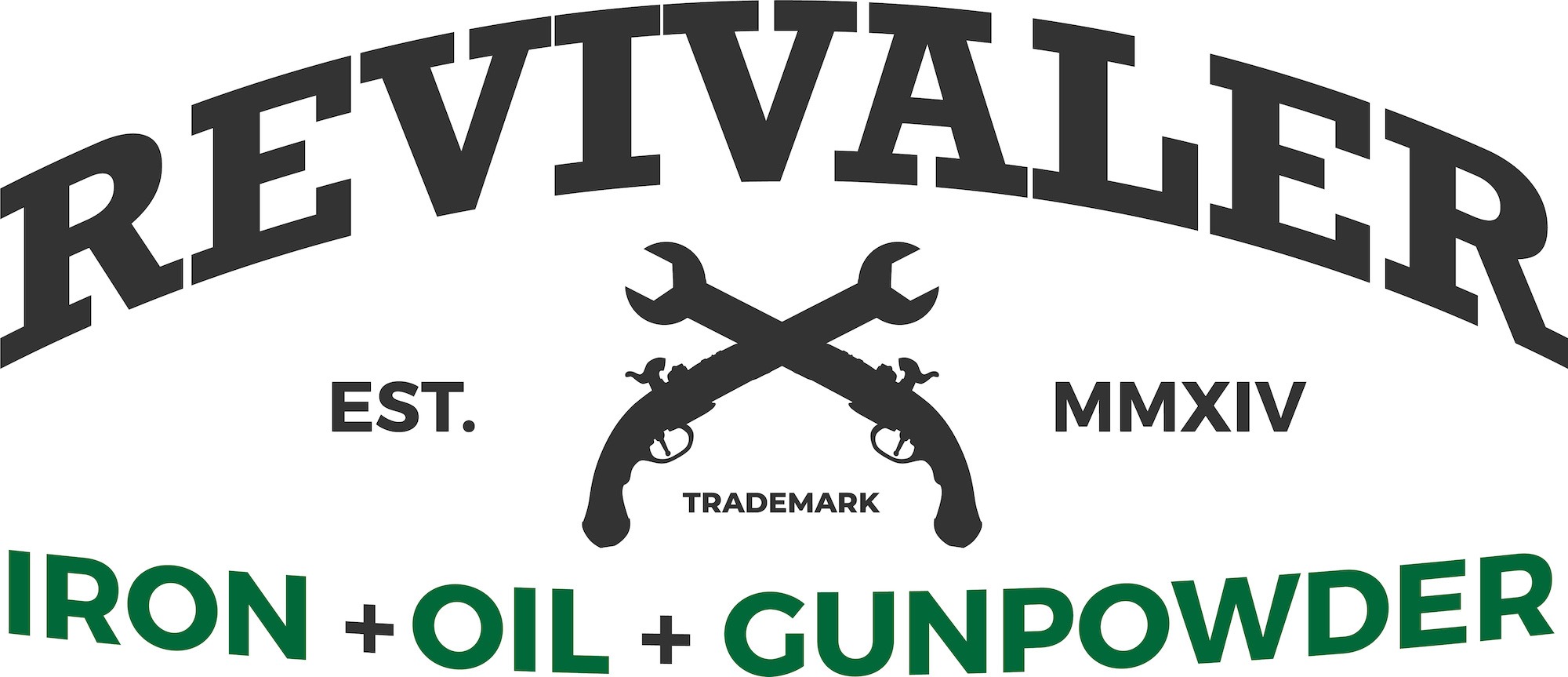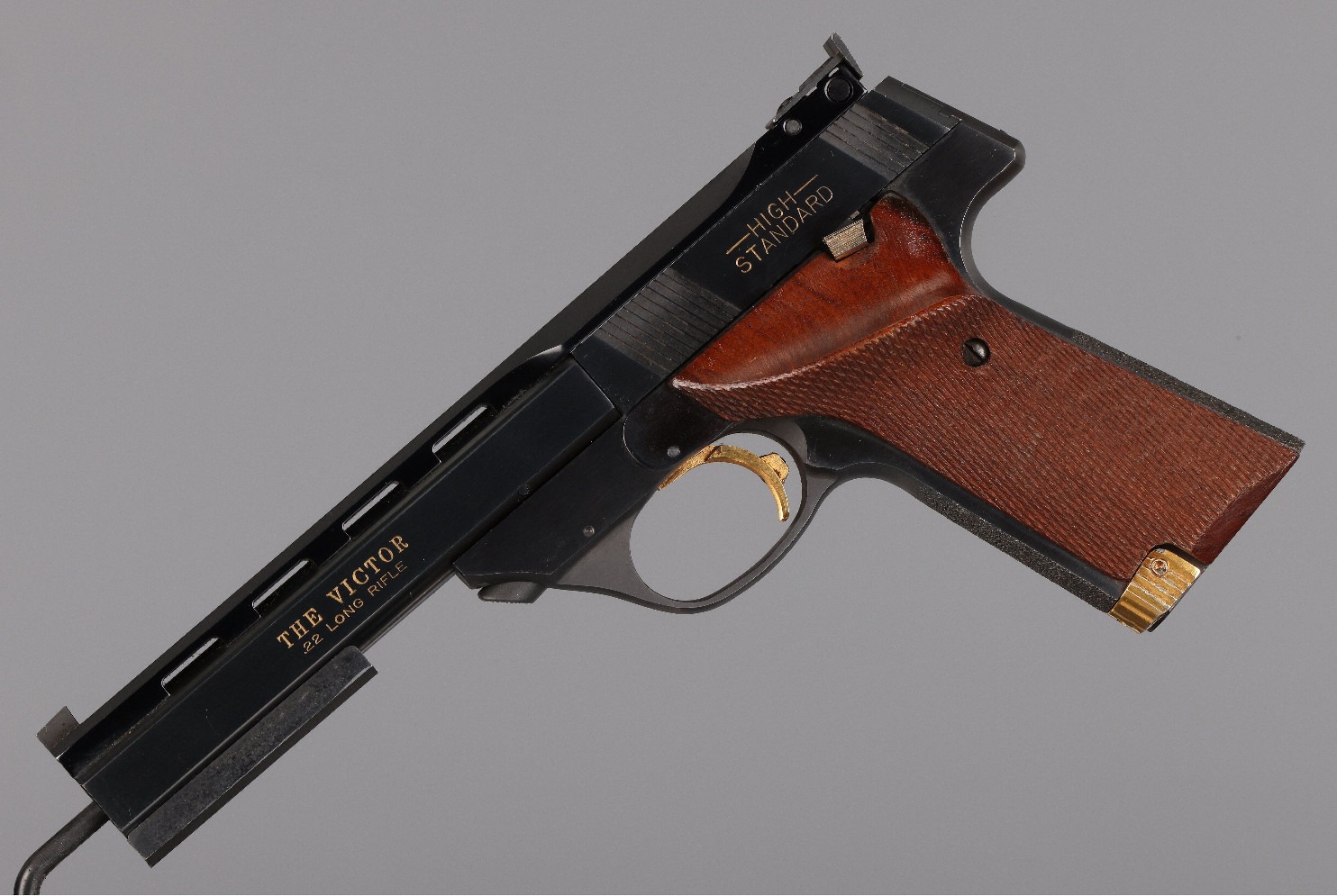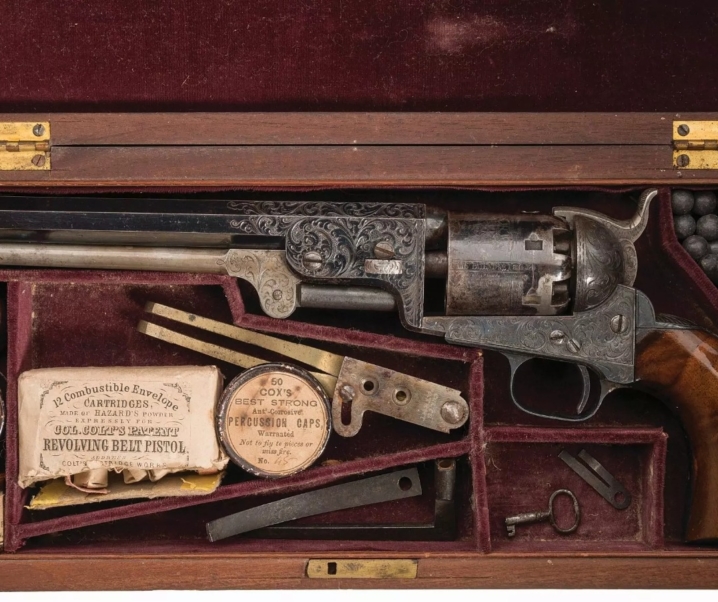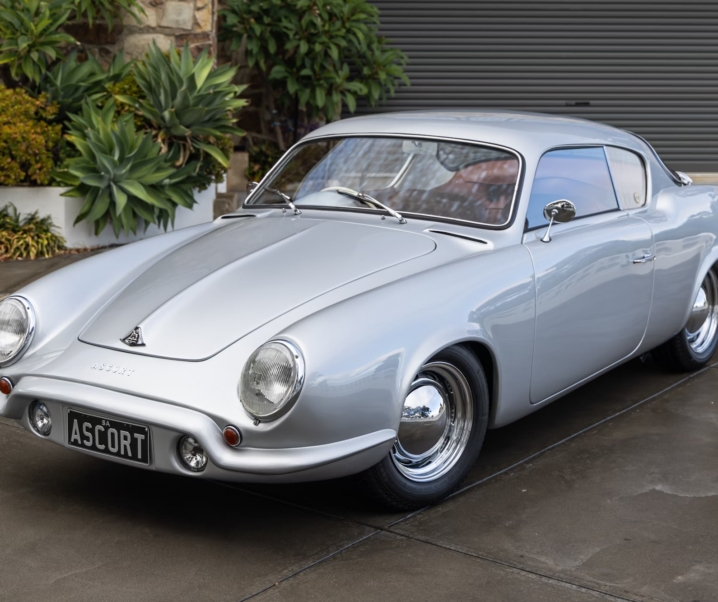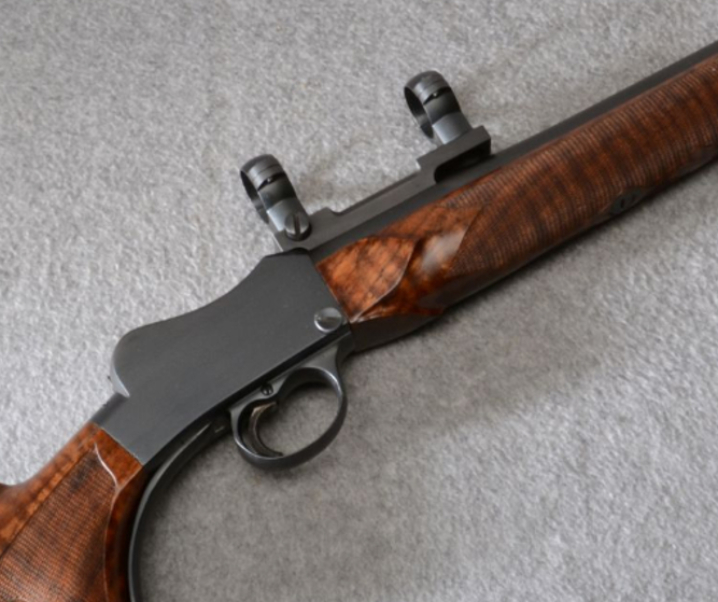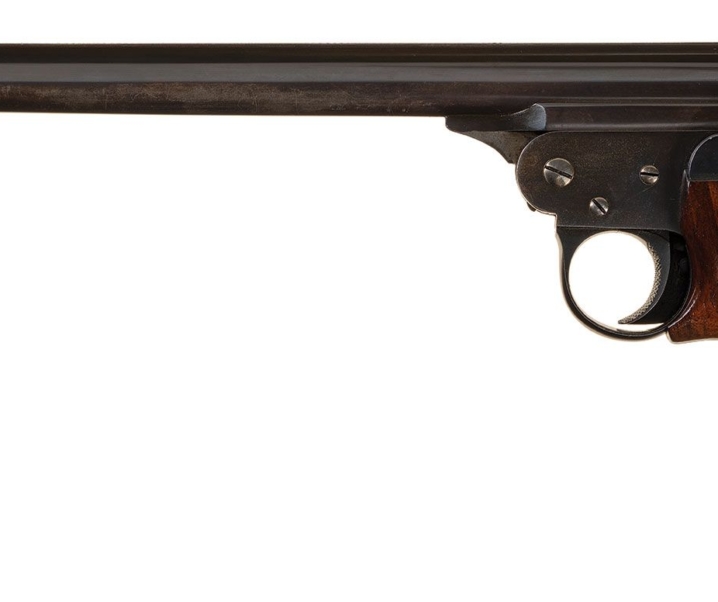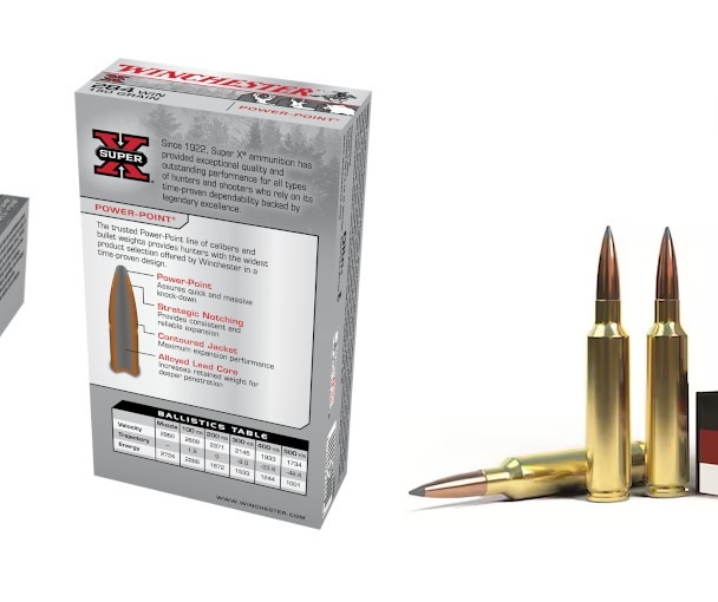High Standard pistols acquired a deserved reputation for accuracy and quality. Primarily thought of as target pistols High Standard also made military pistols including those for clandestine operations.
Fast Facts
- The High Standard range of pistols is an American icon. They were plinking pistols, and they were also pistols used in high level target shooting up to Olympic Games level.
- High Standard supplied many pistols to the US Military and made a specialist stealth pistol for the OSS.
- The best known models made by High Standard include the Supermatic and Victor.
- High Standard made a venture into making a centerfire pistol which was moderately successful.
The Story Begins
The ancestor of the range of High Standard semi-automatic pistols was, paradoxically, not a semi-automatic, but a manual repeater, a sort of “straight pull”.
This firearm was the Fiala and it looked like it should be a semi-automatic pistol. It had a slide much like the Colt Woodsman and later High Standard pistols. The difference was that the pistol did not have a recoil spring. The slide was pushed forward and locked in battery, and stayed locked when the pistol was fired. To fire another shot a slide release button located on the left side had to be pressed and then the slide could be pulled back and cycled forward to strip the next cartridge from the magazine and chamber it ready to fire again.
The Fiala was created by Italian Anthony Fiala who created it as a survival gun for use in extremely cold conditions, such as might be encountered on an Arctic expedition. For such environments Fiala did not trust that a semi-automatic action would be 100% reliable.
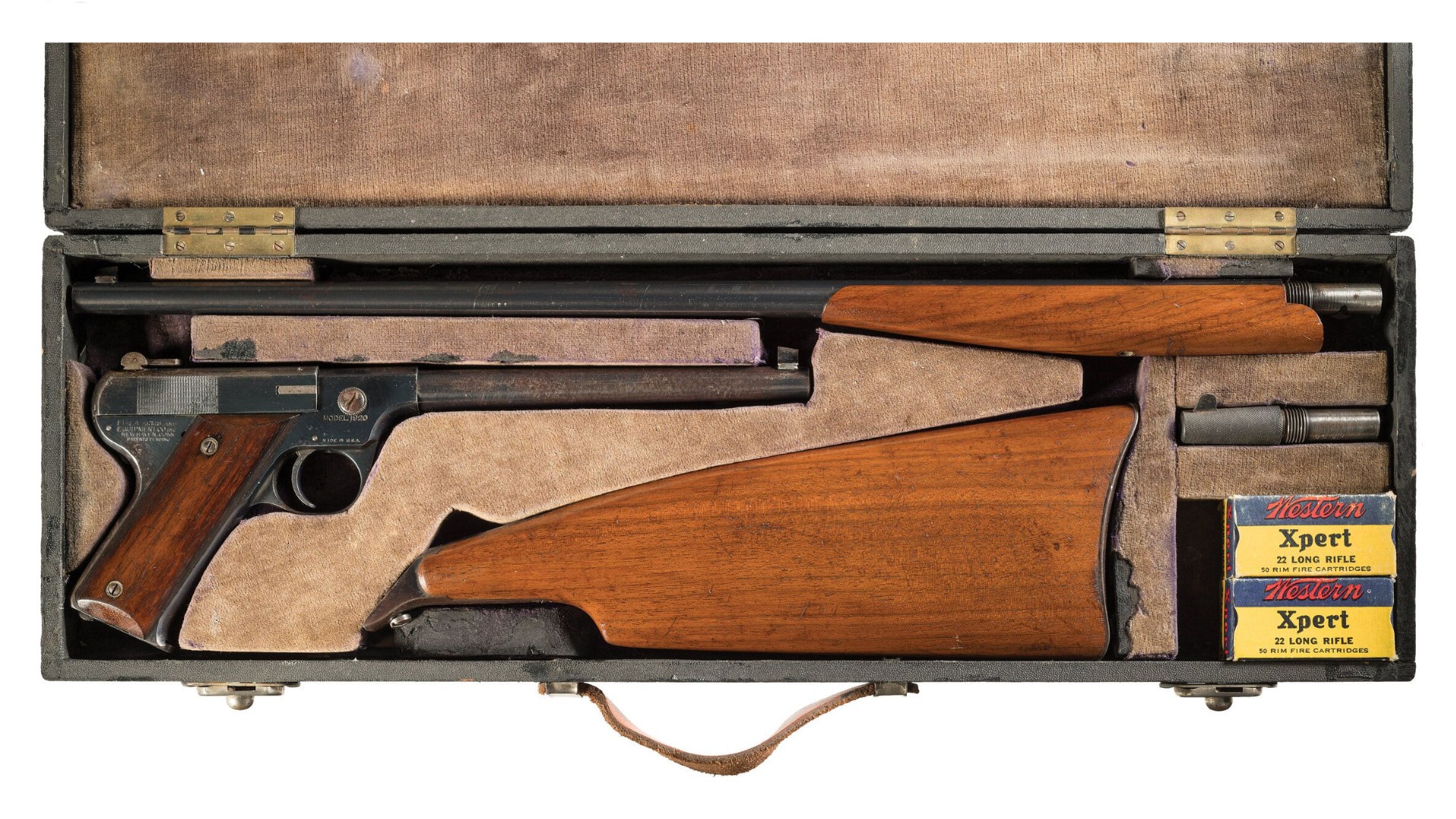
(Note: the above Fiala Arms Model 1920 was sold by Rock Island Auction in 2022).
There have been other firearms that qualify as being almost but not quite a semi-automatic. One was the Harrington & Richardson Model 755 “Sahara” and Model 760, which had no magazine. For the Model 755 and 760 the bolt would fly rearwards on firing and stay open. A fresh cartridge was then pushed into the chamber by hand, and then the bolt closed ready to fire. So it functioned as an auto-ejector rifle.
Another example is the Verney-Carron Speedline “Stop & Go” Rifle which auto-ejects, but requires the shooter to press a button located on the right side of the action to release the bolt to chamber the next round ready for firing. Rifles such as this can be especially useful in jurisdictions where semi-automatic rifles are banned or heavily restricted.
The Semi-Automatic High Standard is born
Returning to the Fiala, The High Standard Company, which had been established in 1926, purchased the rights to the Fiala and re-modeled it by installing a recoil spring and suitable trigger mechanism to turn it into a rather neat semi-automatic .22 caliber pistol.
High Standard dubbed this new pistol the Model B and from it would spring a whole host of model variants. Production and sales began in 1932 and the High Standard pistols would remain in production right through until 2018, although the company would change hands a few times during that eighty-six year history.
High Standard’s Model B was a small frame .22 cal. pistol with small grips, and it had a stable-mate in the form of the Model C which featured small grips and fixed sights.

In the interests of creating an accurate pistol High Standard created their large-frame series based on the same basic design but scaled up a little. These were the Model A, D, and E. These featured adjustable sights and a slide-stop to hold the slide open after the last shot was fired.
The Model A, D and E were all hammerless pistols but High Standard recognized the potential for military acceptance of their firearms and so created versions of these models that were fitted with hammers like the M1911 military pistol. These were designated the Model HA, HD, and HE.
These pistols were generally made with a 6¾ inch barrel.
When the US entered the Second World War High Standard experienced a significant demand for their hammer equipped pistols for recruit training, and were called upon to make a special version for covert operations. That model was the HDM, the “M” most likely standing for “Moderator” (i.e. “silencer”).
The HDM is an interesting pistol. The barrel featured holes along its length and was enclosed in the moderator body.
To comply with the Hague Convention of 1909 which required the use of full metal jacket projectiles for warfare special 22lr ammunition was created with a full metal jacket. The military experimented using lead, gold, and tungsten to develop the most advantageous performance.
These HDM handguns were particularly used by the US Office of Strategic Services (OSS) during the war beginning in 1944. They also saw use by the British SOE (Special Operations Executive) and various other specialist units and were still in use in the 21st century.
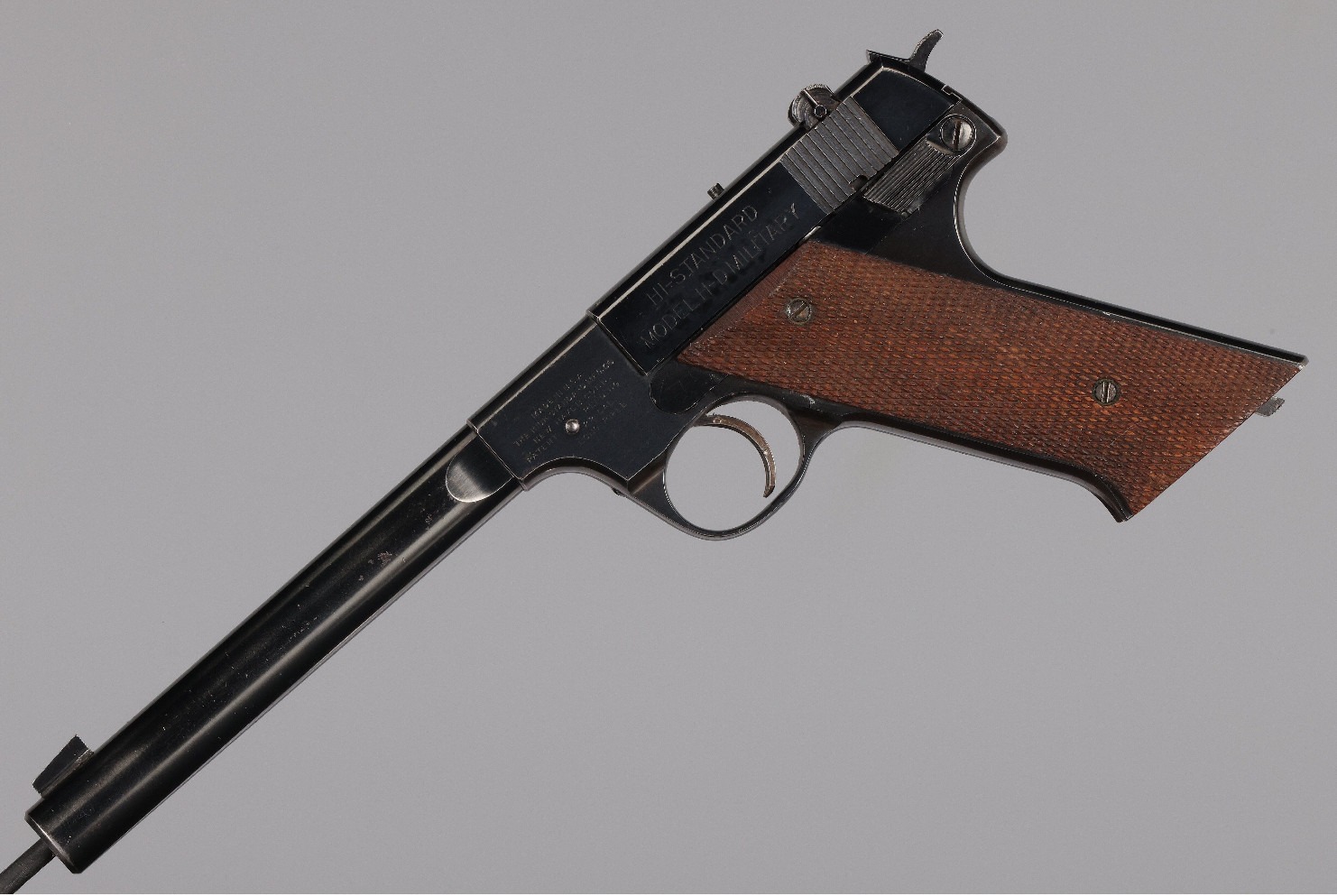
Late in the war, in 1944, High Standard made their first foray into creating a centerfire pistol: the G Series. This model was made under government contract and was originally intended to be for the use of OSS agents, so a moderated version was intended, like the HDM, but chambered for more powerful cartridges.
To create this model High Standard made the frame of the existing HD heavier and enlarged it where needed to accommodate the larger centerfire cartridges. The calibers experimented with were the 25ACP, 32ACP, 32 Smith & Wesson Long, 38 Special, and 9mm Parabellum.
During the development process the 38 Special and 9mm Parabellum proved to be too powerful for the High Standard design.
This project was not completed in time for the war’s end, but High Standard had a bit of a stockpile of the heavier frames and they decided to make the best of those by creating a commercial pistol in 380ACP. This was the “G 380” and these pistols were sold in the US by such dealerships as Stoeger during the post-war 1940’s.
The High Standard G 380 was the parent design for High Standard’s first Olympic pistol design: the GO Olympic, which was purpose built for the Olympic Rapid Fire Match.
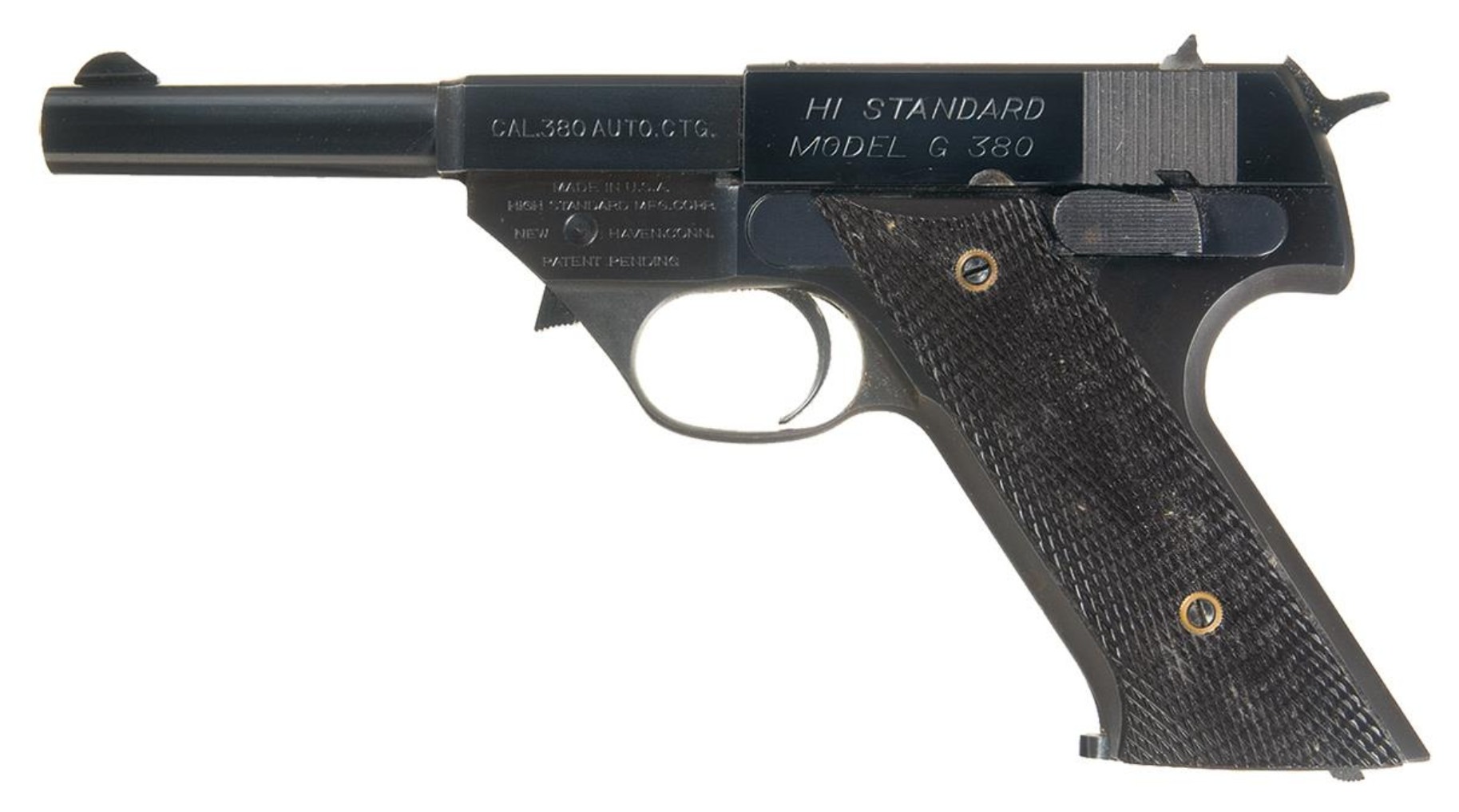
The High Standard GO Olympic model was made on the same basic frame and was fitted with walnut grips and a heavy barrel. The pistol was chambered for the 22 Short cartridge which produces rather less recoil than the 22lr and which was the standard for the Olympic Rapid Fire Match.
The GO Olympic pistol was fitted with an aluminum slide – most likely to ensure reliable functioning with the reduced power 22 Short target competition cartridges, and to minimize recoil disturbance.
Back in the 1940’s, and through into the 1970’s when I was involved in competitive pistol shooting, the Olympic Rapid Fire Match was shot at a range of 25 meters using silhouette targets. There were five targets and they were engaged in timed 5 shot strings of 8 seconds, 6 seconds, and 4 seconds. A competitive score was close to a perfect 300/300 and competitive pistols for the event were expected to produce near zero recoil.
The Supermatic and the 100 Series
By the beginning of the 1950’s High Standard purchased a new manufacturing plant in Hamden, Connecticut, and this plant would become famous for turning out some of the best Hi Standard pistols ever made. The company was well aware that they had a great market for 22 rimfire pistols available to them and they got busy making inexpensive plinking 22 rimfire semi-automatics and serious target shooting pistols, all based on the same basic frame.
The 100 Series was introduced in 1954 and then in 1965 High Standard introduced the “Military Model” which was built on a re-designed frame that provided a grip angle and feel very much aligned with the Colt M1911.
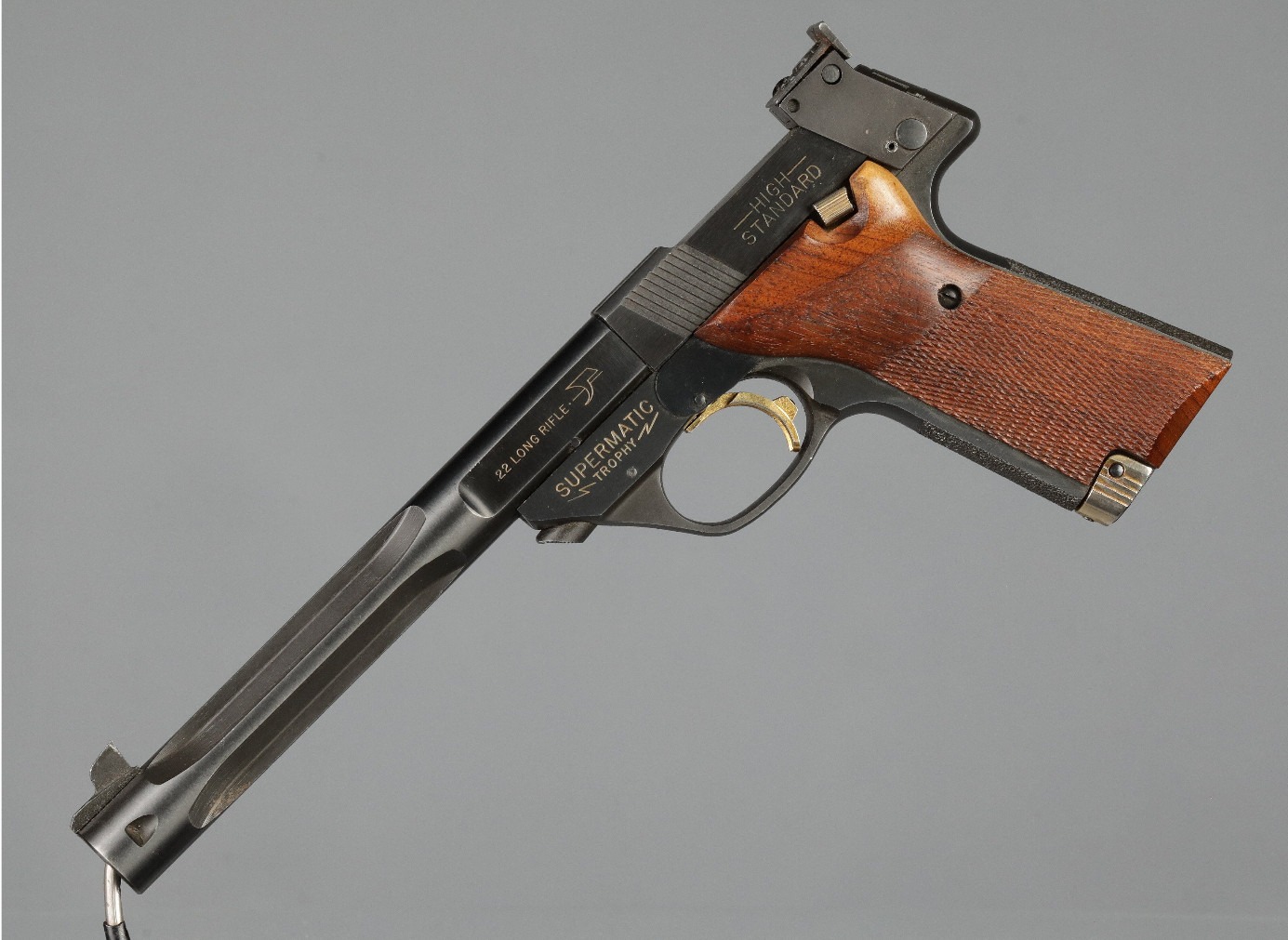
During this period High Standard continued to produce both the 100 Series pistols which are characterized by the angled grip of the original High Standard models, in addition to the “Military Model” style pistols.
These 100 Series and Military Model pistols were somewhat different to their predecessors. The barrel was able to be detached from the frame by pressing the button located at the front of the frame. Then the slide could be withdrawn and removed by taking it forward and off the front of the frame. This was an improvement over the older style pistols which allowed the slide to be taken off from the rear of the frame.
Hi Standard made a large number of model variations during and after this time.
In 1968 High Standard was sold to the Leisure Group and its production was moved to a new facility in East Hartford, Connecticut in 1977.
High Standard continued making their pistol line up until 1984, when the company ceased production.
But that was not to be the permanent end of the company nor of the fantastic line of pistols they made. A new High Standard Manufacturing Company was created and located in Houston, Texas.
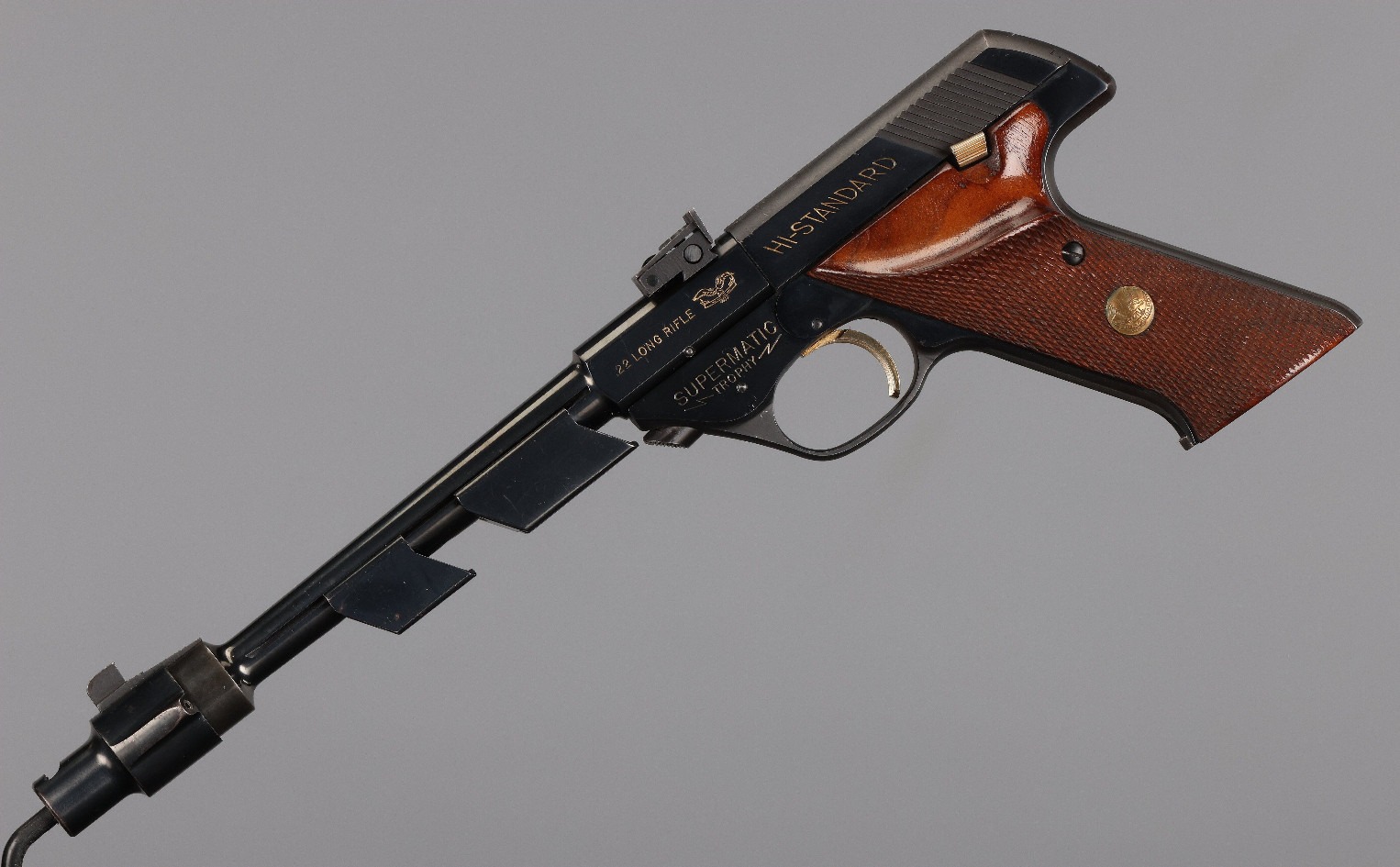
The range of High Standard models included the Victor, Supermatic, Supermatic Trophy, and Supermatic Citation.
You can get a bit of an overview of some of the models made by looking at those on offer from Rock Island Auction in their sale at time of publication. That sale will be ending on November 16, 2025.
You’ll find a listing of those Hi Standard/High Standard pistols if you click here.
You will find listings of available spare parts if you click here.
I have a lot of affection for the High Standard target pistols. They formed a significant part of my time involved in competitive pistol shooting.
Picture Credits: All pictures courtesy Rock Island Auction.
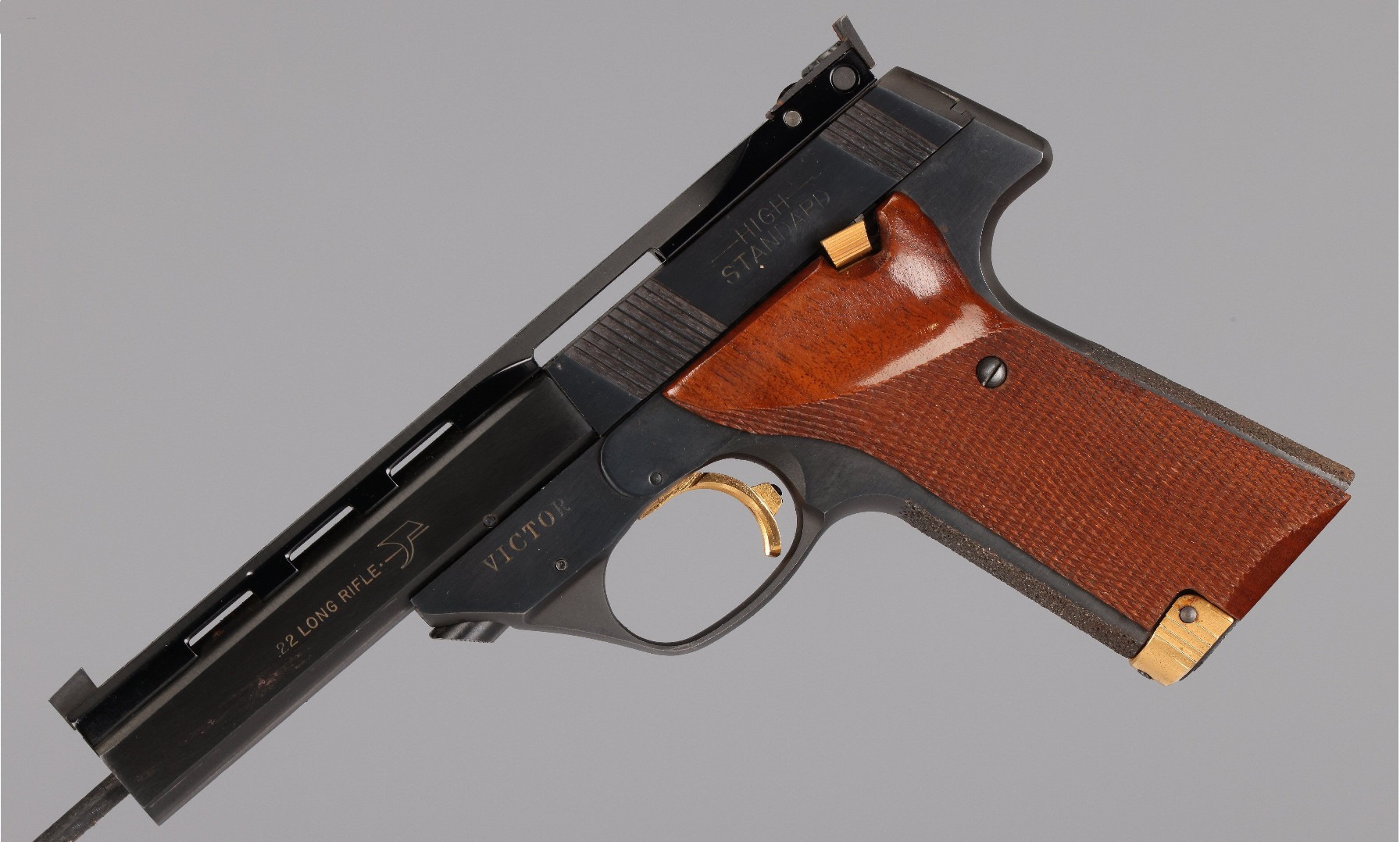
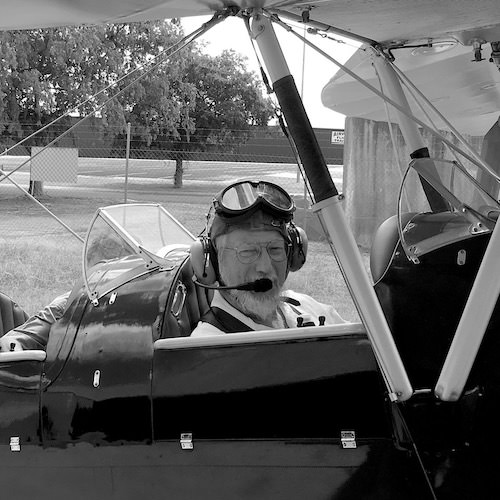
Jon Branch is the founder and senior editor of Revivaler and has written a significant number of articles for various publications including official Buying Guides for eBay, classic car articles for Hagerty, magazine articles for both the Australian Shooters Journal and the Australian Shooter, and he’s a long time contributor to Silodrome.
Jon has done radio, television, magazine and newspaper interviews on various issues, and has traveled extensively, having lived in Britain, Australia, China and Hong Kong. His travels have taken him to Indonesia, Israel, Italy, Japan and a number of other countries. He has studied the Japanese sword arts and has a long history of involvement in the shooting sports, which has included authoring submissions to government on various firearms related issues and assisting in the design and establishment of shooting ranges.
